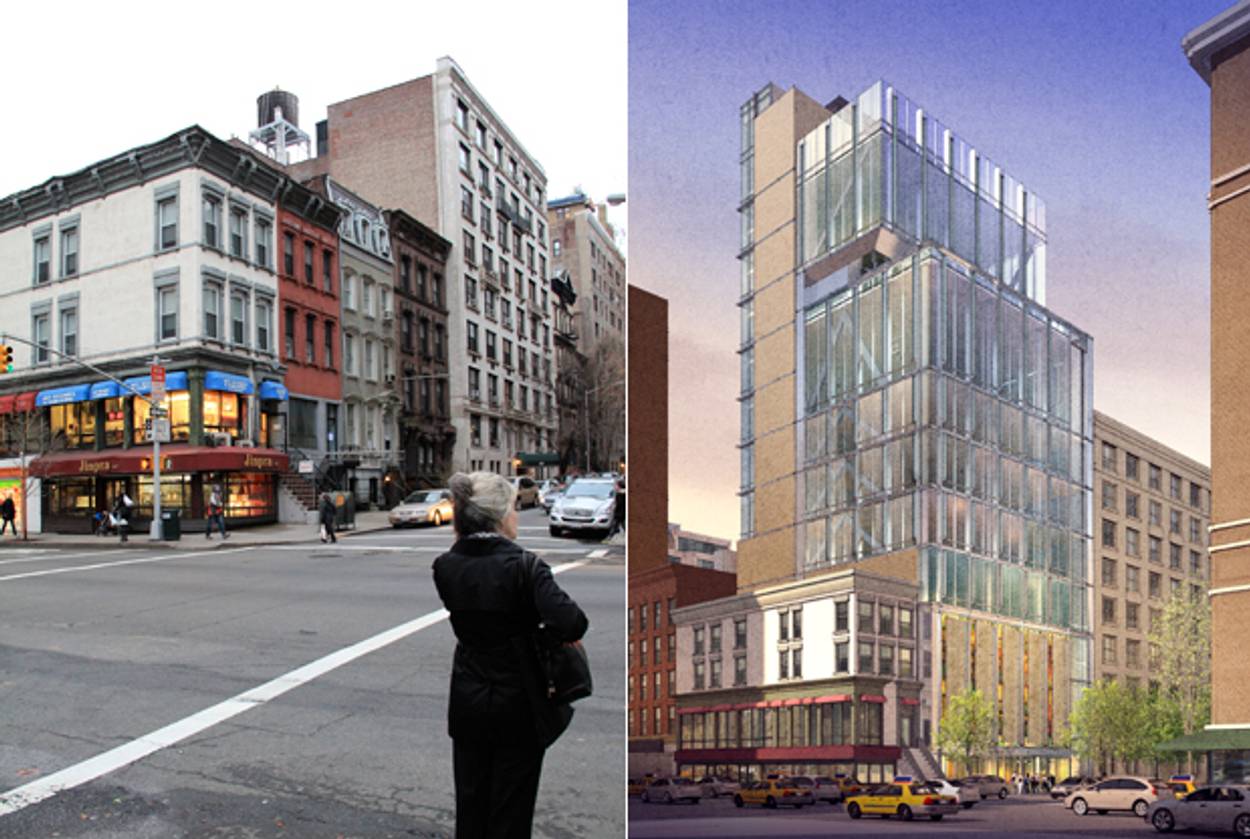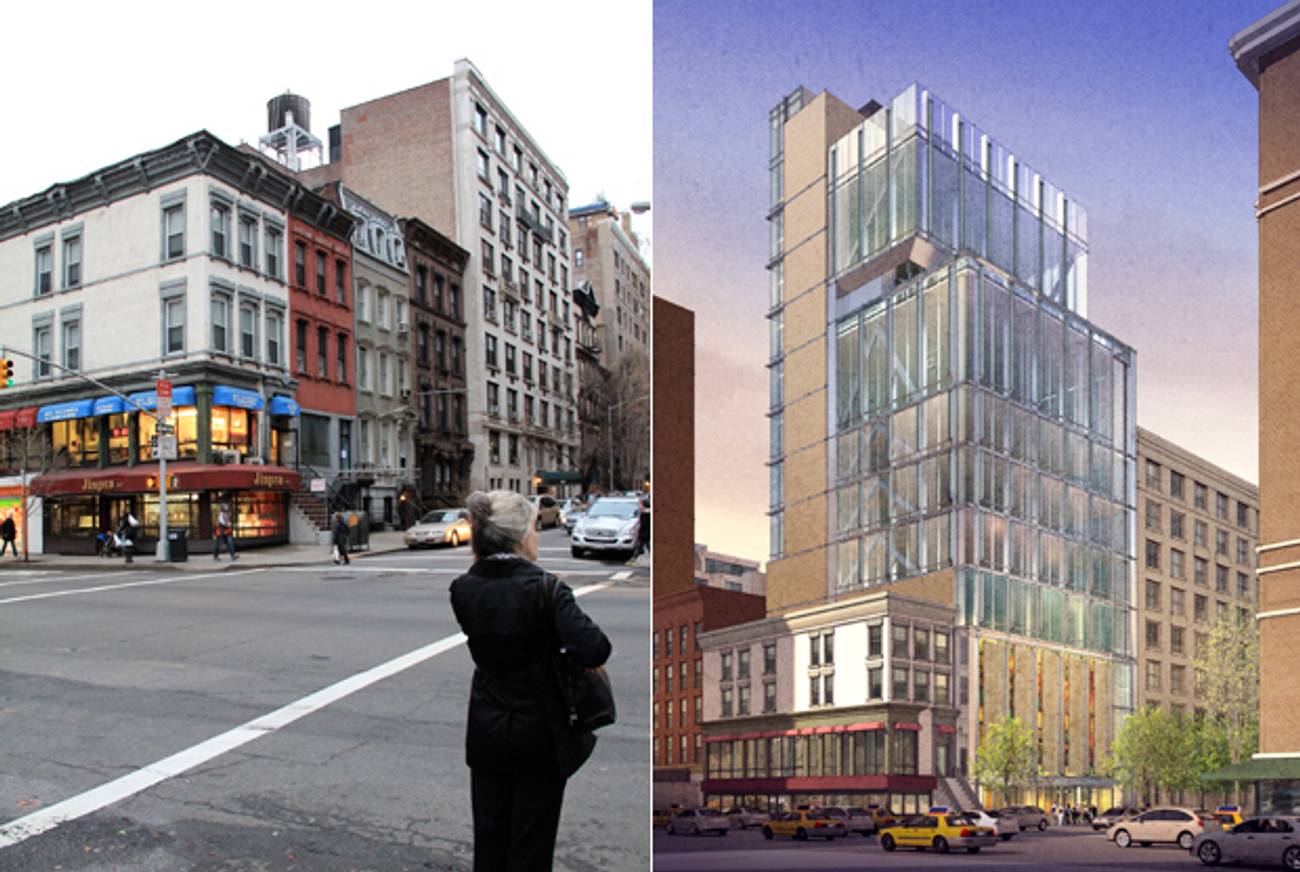Sephardic Jews Take Manhattan
The Syrian community, long based in Brooklyn, makes itself at home on the Upper East Side




The standard iconography of Jewish Manhattan has always been Ashkenazic: pastrami at Katz’s, smoked salmon at Russ & Daughters, tenements and Judaica stores on the Lower East Side, Hasidic diamond dealers in Midtown. Even with the growing popularity of Sephardic dishes on Upper West Side holiday tables, almost no one remembers that a Little Syria full of Ottoman Jews once thrived on Washington Street in Lower Manhattan—mainly because the entire community packed up and left for the Brooklyn neighborhood of Gravesend before the Second World War.
Now the Syrian Sephardic Jewish community is once again establishing itself in Manhattan. It’s been nearly a decade since Congregation Edmond J. Safra—whose namesake built a banking fortune in Brazil—opened just off Central Park on East 63rd Street, to serve people like him: Jews from Middle Eastern countries who grew wealthy, largely outside the United States, and settled on the Upper East Side along with other members of the moneyed global elite. (Safra was found dead in his Monaco home in 1999.) But the synagogue’s list has grown to 1,500 families, and much of its recent growth has been fueled by Brooklyn transplants. “It used to be only singles, and then it became newlyweds, but for only one or two years,” said Elie Abadie, the entrepreneurial Mexico City-raised rabbi of the Safra synagogue. “Now we have young families, and we have empty-nesters moving in, once their children have all married.”
In 2011, Abadie launched a preschool, the Sephardic Academy of Manhattan, in an effort to anchor young parents torn between remaining and returning to Brooklyn, where the dominant Syrian community has invested heavily in schools and social services. Next month, demolition is scheduled to begin on three adjoining townhouses along Manhattan’s East 82nd Street to make way for Abadie’s most ambitious project to date: a 12-story, $50 million community center on East 82nd Street at Lexington Avenue. When it opens in 2014, the glass-fronted building will feature a kosher café, a swimming pool, exercise and recreation rooms, a kitchen for cooking classes, and a two-level banquet hall with an outdoor terrace graced by skyline views and a “glamour pool.” The Moise Safra Community Center—named for Edmond’s brother, who underwrote the building—will also include a second Sephardic synagogue for families living in the East 80s and 90s, once a hub of German Jewish life in Manhattan.
“We’re trying to create a neighborhood within a neighborhood,” the center’s director, Rebecca Harary, told me. The facility will operate on a membership structure and be open to all the Jewish residents, organizations, and schools in the area, Harary explained, but the focus will be on providing a place where people who identify with the Sephardic community can gather. “We want to celebrate our own traditions in a place where it’s valued as important and doesn’t take a back seat to American life,” Harary said.
Harary is part of her own target market: a mother of six who moved in January from Brooklyn to the Upper East Side with her husband and their two youngest children, who continue to make a reverse commute to attend the heavily Syrian Yeshivah of Flatbush in Brooklyn. With her four older children out of the house, she and her husband, who both grew up in Florida, decided it was time to make the move into Manhattan. “It’s an exciting leap,” Harary, who was programming director at the Safra synagogue before she took on the community center project, told me when we met at her temporary office in the Safra family foundation’s headquarters in Midtown. “We’re very happy here. We’re not going back.”
Harary remains in the minority among Syrian Jews, who remain concentrated in Brooklyn and are the most cohesive of New York’s Sephardic communities, which encompass those whose ancestors settled everywhere from Morocco to Central Asia on their way east from Spain after the expulsion of the Jews in 1492. According to a recent demographic study commissioned by the UJA-Federation of New York, there are 38,000 Syrian Jews in the New York City region, a group that includes Jews from neighboring countries like Lebanon and Egypt who trace their ancestry to the large Jewish communities that once existed in Damascus and Aleppo. Of those, half live in Brooklyn, where the community occupies an affluent pocket of Gravesend and Midwood thick with synagogues, community centers, and multimillion-dollar mansions—a place that can make the Upper East Side seem relatively affordable. Other Syrian Jewish communities have grown on Long Island’s North Shore and in Deal, N.J.
When the survey was last conducted a decade ago, the Syrian community in Manhattan wasn’t big enough to study. “Ten years ago we didn’t even have it as a variable,” said Pearl Beck, a demographer who worked on the study. Now, she said, some estimates put the Manhattan community as high as 17 percent of the overall Syrian population of New York.
But to some who remain in Brooklyn’s Syrian hub, the growth of a parallel community in Manhattan threatens the decades community leaders have spent investing in building a geographic and social infrastructure they see as crucial to holding the community together in the United States. “One person said to me, ‘These resources are being lost, because instead of spending resources in Brooklyn they’re spending them in Manhattan,’ ” said Galia Avidar, a doctoral student in Jewish studies who also worked on the UJA census. “But these kids are eventually going to spread their wings and get on the F train, and they need a place to go.”
Last summer, Congregation Magen David, a predominantly Syrian synagogue founded in 2001 to serve Syrian Jewish college students and young professionals living in the Union Square area, opened a 9,000-square-foot space on Sullivan Street, in Lower Manhattan, after a years-long effort to secure space in Chelsea. The center’s young rabbi, a 26-year-old named Sion Setton, was raised in Brooklyn but worked with Abadie at the Safra synagogue uptown while studying for his ordination at Yeshiva University. “We’re not only open to Syrians, even though services are in a Syrian dialect,” he told me. “But there are Moroccans, Iraqis, Lebanese, other Jews in the area who relate to this kind of service more than the Ashkenaz one.”
The new center, he said, will offer a menu of exercise classes like yoga and Zumba alongside religious services. Many of his congregants are students from nearby New York University and the New School, but his congregation includes adults who are buying, not renting. Setton singled out one retiree from Brooklyn who initially moved to the Upper East Side to be closer to his children and grandchildren in Manhattan and finally decided to move downtown, where they live. “He said it made him feel 20 years younger to be downtown,” Setton told me. “People are interested in staying for the long haul.”
***
Like this article? Sign up for our Daily Digest to get Tablet Magazine’s new content in your inbox each morning.
Allison Hoffman is a senior editor at Tablet Magazine. Her Twitter feed is @allisont_dc.
Allison Hoffman is a senior editor at Tablet Magazine. Her Twitter feed is @allisont_dc.